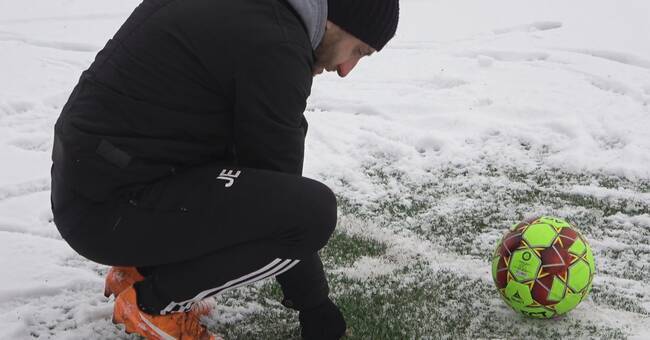In the clip above, you can see what the frozen cork granules look like.
To fill the artificial turf, rubber granules are used, which often come from recycled tires.
Granules are counted as microplastics and spread from the carpets out into nature and into the sea.
- We have an escalating problem in Sweden with our artificial turf where rubber is used.
We need to do something together to take care of our environment, says Tomas Djurfeldt, unit manager culture and leisure in Svedala municipality.
Forced to cancel workouts
Three years ago, the decision was hammered out in Svedala.
The municipality wanted to participate in the work for a better environment and decided to use coconut and cork as filling material on the new artificial turf that was inaugurated in May.
But an unpleasant surprise awaited when the temperature dropped below zero and it froze.
"Should do more research"
The natural material binds moisture and freezes to ice at zero degrees.
The pitch becomes slippery and the studs do not attach when you run, according to Jacob Eliasson.
- I think you should have done more research on the issue before you put so much money on this.
We will not be able to hold the training we have planned this winter, says Jacob Eliasson, chairman of Skabersjö IF.
Tomas Djurfeldt believes that the decision was made after the research that existed at the time.
- We made decisions based on what we knew was best at the time, he says.

